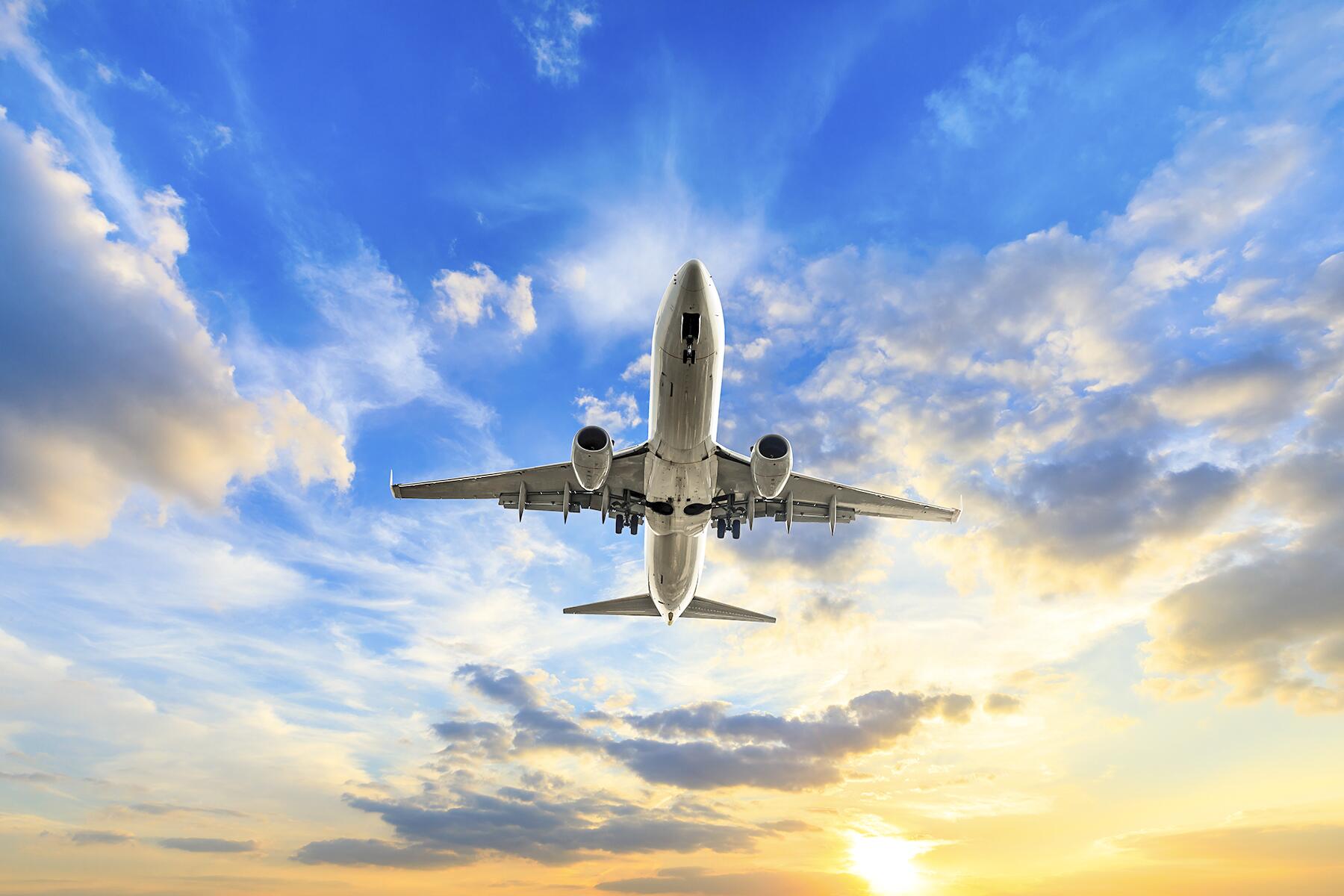A beginner's guide to credit card points and airline miles.
The travelers of the world have divided themselves into two camps: those who pay full price for their trips and those who don’t. Savvy adventurers know that they can eliminate the cost of flights and lodging by using rewards credit cards while saving cash money for the experiences that make a vacation enjoyable. So if you can get free or deeply discounted flights and hotel stays, why don’t more people do it?

Why Traveling for Free Isn’t for Everyone
Honestly? Free and discounted travel doesn’t come without a considerable amount of leg work. It takes a certain type of person to want to devote the time and energy to track card sign-up dates, minimum-spending requirements and point balances.
Furthermore, at first glance, the world of bank points and airline miles can seem daunting. To frequently travel on the cheap, you have to know a lot about travel rewards—airline miles, hotel and credit card points—and how to redeem them for travel and stays with individual airline and hotel programs. That means learning the ins and outs of each travel program, figuring out which credit card to use to earn what rewards, spending countless hours booking trips so that you get the most out of your travel rewards… On top of it all, the lingo these travel hackers use sounds like a foreign language that even Google Translate can’t interpret.
Although you might get lost in the little nuances at first, the big picture isn’t that difficult to comprehend. If you already hold a simple cashback credit card, then you’re familiar with the concept of earning rewards and might as well learn how to earn cheap trips.
Recommended Fodor’s Video
Pay Off the Balance Each Month
Rule No. 1 is the most important rule of them all. We can’t stress enough how important it is to remember this rule. Earning travel rewards means using credit cards to earn hotel points and airline miles. That means spending money on credit cards for your everyday expenses instead of using your bank account or a credit card that doesn’t earn rewards. When you spend cash, you earn points and miles on every dollar you spend (whether you earn a single point or mile or multiple points and miles per dollar you spend depends on the card).
To be successful in this hobby, you must pay off your bill in full every single month. Rewards credit cards only reward those who do not pay interest. The cards that give you travel rewards in exchange for using them over other cards also carry extremely high interest rates. Trust us, you don’t want to be paying 16% APR just to earn a flight or two. If you don’t pay off your entire balance each month, whatever you pay in interest will negate all your rewards quicker than you can say “interest.” It’s just not worth it. If you must carry a balance, then rewards card aren’t for you.

Learn the Difference Between Bank Points and Airline Miles
If you’re ready to move beyond cashback cards and want to move on to airline and bank rewards cards, you’ll need to learn the difference between the two rewards currencies.
Airline Miles: airline miles are a type of reward currency that you earn with an airline (or its partners) and spend with an airline (or its partners). You earn them by joining the airline’s rewards program like Delta SkyMiles (which is free and will also earn you airline miles for every flight that you take) or/and by opening a co-branded credit card like Gold Delta SkyMiles which will earn you 1 Delta mile for every dollar that you spend on that card. Most major airlines have their own co-branded credit card that earns miles at individual rates.
Keep in mind, however, that airline miles have no cash value. You can only use them to buy flights with their respective airlines. But, they’re great for buying heavily discounted flights to many destinations using the miles you’ve earned instead of cash. Why do we say “discounted” and not “free?” Because you still need to pay carrier-imposed taxes on award tickets, which can range from something like $50 to several hundred dollars, depending on the flight.
Bank Points: Bank points are a more flexible type of reward currency that you earn from the bank that provides your rewards card. Well-known examples are American Express Membership Rewards, Chase Ultimate Rewards and Citi ThankYou Rewards. The points that these rewards credit cards earn can be used with their transfer partners. Each bank has its own transfer partners that often include major like Marriott, and major airlines like United, Delta, etc. You can also use your points like cash (at a rate of 1 to 1.5 cents per point) to pay for your flight and that flight’s taxes. Versatility is one good reason to prize bank points over airline miles.

Don’t Cringe at Annual Fees
In addition to high interest rates, most rewards credit cards come with annual fees. Nobody wants to pay fees, let alone fees that go to banks that get richer and richer every day. However, think about a credit card’s annual fee as a way of investing in travel. As long as you extract more value from the card than you pay in annual fees, you’re doing it right.
Let’s look at some examples. Say you have a co-branded airline credit card like American Airlines’ AAdvantage credit card that allows up to five of your travel companions to have their first back checked free. Without this card, you and your travel companions would have to pay $30 for each checked bag. If there’s just two of you traveling round-trip, you’ll be out $120 per round-trip journey. So it makes sense to pay this card’s $99 annual fee because it will pay for itself in just one trip. The more trips you take, the more cash you save by paying the fee once per year.
Same goes for bank cards. Many have fees that go as high as $550 per year. However, let’s use a more reasonable example: the Chase Sapphire Preferred card charges $95 every year. As a first-time cardmember, you’ll receive a sign-up bonus of 60,000 points worth at least $750 because every point is worth 1.25 cents when redeemed through the travel portal.
The card also comes with trip cancelation/interruption insurance, baggage delay insurance and primary auto rental collision damage, among other benefits. Say you rent a car during one of your trips, pay for it with the Chase Sapphire Preferred and—god forbid—get into an accident. The card’s benefits cover the vehicle. You also save a chunk on foreign transaction fees if you frequent international destinations, which will more than return your $95 annual investment.

Set Your Travel Goals First
Although some credit cards are universally praised, not every travel rewards card benefits every traveler equally. Southwest Airlines co-branded cards don’t appeal to those who don’t live near an airport that Southwest serves, and people who travel domestically don’t really need cards with waived foreign transaction fees.
Many credit cards offer bonus points in certain spending categories. Look at your statements. Where do you spend money? A card that offers a dining bonus won’t benefit those who cook at home, and a card that offers gas rewards won’t benefit those who take public transportation.
Before deciding which credit card to apply for, set a goal. Pick your destination, look at which airlines fly there, determine how many points you need for your party, and make an informed decision based on those factors.
In some cases, you’ll have to apply for more than one credit card to meet your travel goals, but don’t worry. Contrary to popular belief, holding multiple credit cards doesn’t hurt you. In fact, it actually helps your credit score. Yes, there’s an initial hit with every inquiry, but the score usually goes back up within a month or two. But how?
Your total line of credit increases with every card approval, and as long as you utilize less than 30% of the total credit available to you, your score increases over time, which is easier to do with a lot of extended credit. And this brings us full circle to rule No. 1. Don’t spend beyond your means and pay off your balance in full. Happy travels!




